The evidence base is growing: strengthening women’s land rights contributes to women’s empowerment and household welfare.
Evidence is also showing that women who have more secure land tenure are more likely to plant trees or make other investments to improve the land and generate ecosystem services. This means efforts to improve women’s land rights can also create enabling conditions for land restoration.
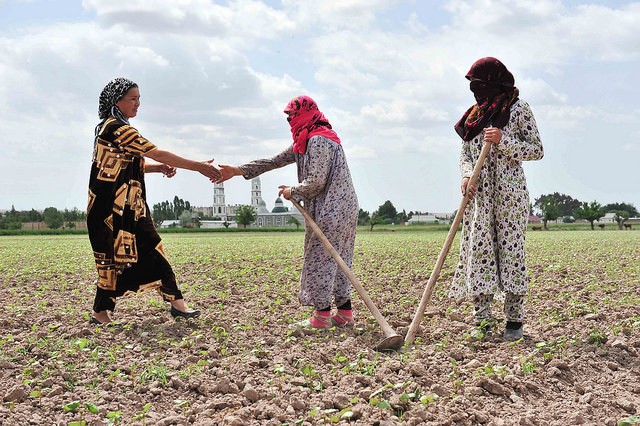
But strengthening women’s land rights isn’t that simple. Unfortunately, there’s also evidence that changing property rights is not an easy process in any case. There are always vested interests to protect the status quo, especially when it comes to something as important as land rights. And when it comes to women’s property rights, there are additional layers of gender norms that make it even more challenging to bring about changes.
The issue of women’s land rights for land restoration will be discussed at a high-level panel “This Land is Our Land: Gender perspectives on tenure and rights” at the Global Landscapes Forum in Paris, December 6. In preparation for that event, we have asked a number of experts:
“What would it take to strengthen women’s land rights, in practice?”
There are a number of debates to consider when answering this question. A few are highlighted below to guide responses.
Can women’s property rights be secured through changes to the law? Legal and policy reforms are important in many cases, but do not always translate into change on the ground. To be effective, not only do reforms need to be implemented on the books, but men and women also need to know about the changes. Furthermore, cultural norms and customary rights are powerful in many contexts, with varying definitions of men’s and women’s rights over resources. How should statutory law interact with customary law, in such a way that creates lasting cultural change?
And then there are debates over whether women’s property rights are more secure under individual, household, or collective tenure. To be secure, do women’s property rights need to be registered and held by an individual woman, or can they be secured as part of households or within community land rights?
On the positive side, there are good examples of projects and policies to strengthen women’s land rights that have worked or are being tested. But gender relations and property rights are both highly contextual, so it is dangerous to impose “models” from one country to another. For example, how does the type of terrain (e.g. forested versus agricultural), land tenure context, or economic activity of the land imply different bundles of rights, and different threats to women’s tenure security?
Now we’re asking you: “What would it take to strengthen women’s land rights, in practice?”
Read responses from experts below and join the debate by sharing your thoughts in the comments section below.



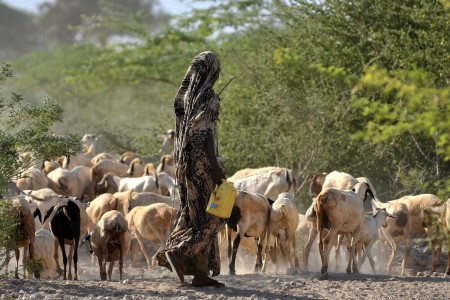



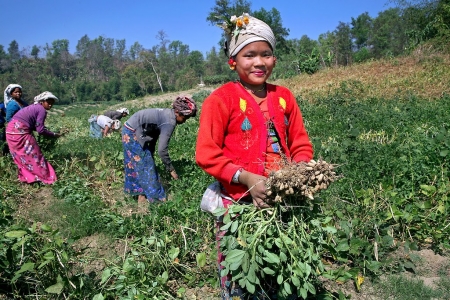



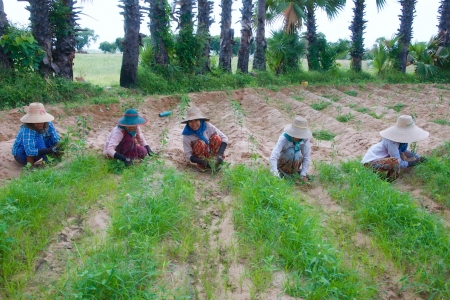
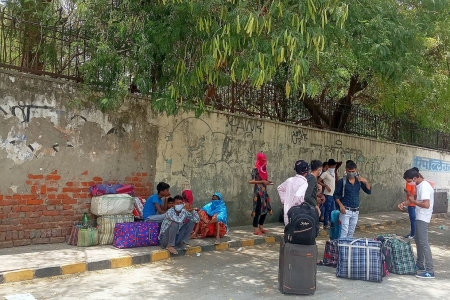




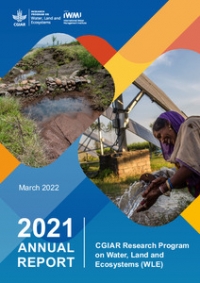
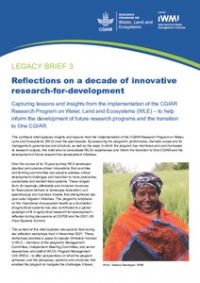
Comments
As the other contributors to this Thrive affirmed: women’s stronger land rights enhance their investments in land productivity. So what happens in matrilineal societies? What are incentives for women to invest in higher land productivity? For men? Our WLE research in Southern Africa explores this question with a focus on the crucial resource for higher productivity: access to water.
Matrilineal societies are widespread in Southern Africa. The southern half of Malawi (except the most southern tip) is matrilineal, as well as the northern Mozambique and half of Zambia, mostly in the north-eastern part. In Tanzania, the broad coastal belt south of Tanga, including Dar-es-Salaam, Morogoro and the Uluguru mountains is matrilineal. In that last area of the Waluguru, land is intensively cultivated and a vibrant, highly productive irrigated farming system has developed over the last decades. On steep terraced slopes high-value horticultural crops and maize, potatoes and beans are irrigated from tens of local farmer-initiated gravity irrigation canals in each hamlet. Vegetables are sold at great distances, including Dar-es-Salaam. We studied 152 irrigated plots and irrigation practices in Nyandira and Tchenzema. Some answers are the following.
The first finding is a remarkably egalitarian and productivity-oriented collaboration between the spouses. In trying to disentangle intra-household access to and control over land; labor and decision-making about cultivation; and decision-making about the use of the produce, the answer is again and again: ‘jointly’ because ‘after marriage we are one’. Egalitarian access to land is an important factor underpinning these production relations.
The second finding is about this egalitarian land tenure. Daughters inherit plots from their mothers’ clan and stay at their parents’ place at marriage. Sons move to their new wives’ clans and cultivate their in-laws’ land. This matrilineal culture provides married, single and divorced women and widows with guaranteed access to plots. But this culture also works for men. Sons also inherit land in their mother’s clans albeit typically smaller portions than what their sisters inherit. In addition, men have access to the land of their wives’ clans as long as they are married. Divorce is rare (but increasing). When there is a divorce, the wife with the children stay, and husbands have to leave everything behind. However, ‘hard working men easily find another wife’. There is great flexibility in adjusting these broad norms to specific needs at specific times. Inheritance remains the most important way to obtain land: in 74% of all plots studied. In 55% of the cases of inherited plots daughters inherited; sons inherited 45% of the (usually smaller) inherited plots.
The purchase of land becomes more frequent; 26% of the plots studied were bought (renting land is negligible). In two third of these cases, spouses bought the land together. They paid with the income of joint harvests so the land purchased is also seen as joint ownership. However, when buyer and seller documented their transaction, only men signed. Women and children were at best a ‘witness’. In the other third of individual purchases, more women than men obtained land. Prices for irrigated land are much higher than rainfed land and can be USD415 per acre, or the value of one season irrigated crops.
A third finding is somewhat surprising. While irrigation is generally also seen as a joint endeavour in which spouses mutually support and replace each other, men are somewhat more active than women, especially in the initiative to start digging an irrigation canal and in the cleaning and maintenance of canals. Men do not seem to distinguish between plots; they seek to irrigate both their own and their wives’ plots. In probing for reasons, women’s disproportionate responsibility for domestic chores came up. The unequal division of domestic chores remains the main gender difference, even though Waluguru men take up some chores such as firewood collection and washing of own clothes. There are no taboos, for example, for men to cook. Another reason mentioned is that digging and repairing canals sometimes implies carrying of heavy stones. Women would lack the ‘nguvu’ (strength or power) needed for that.
There are more gender differences, for example the recent phenomenon of men’s ‘secret pocket’ through which men try and hide income gained from their sale of crops for personal spending, for example in the pub. However, this seems quite rare and women fiercely contest this. Another gender difference is that men tend to dominate the public space of off-farm income- generating opportunities, such as the more distant trade of the cash crops or transport. The notion that men are the ‘head of the household’ also exists. This is at least partly related to the influence of the Catholic church in this area. In any case, men are seen as ‘fighting for cash income’. The gender and productivity implications of other trends in these areas are also yet to be understood, in particular the trend that brothers shift from taking care of their sisters’ children to focusing more on their biological children. In general, kinship bonds of the extended families weaken in favour of nuclear families. For example, in the past siblings and parents of the extended family held claims to clan’s land cultivated by one member. Nowadays, some individuals and couples pay off these claims with a symbolical amount of money to ‘purchase’ the land from them.
While many knowledge gaps remain, a preliminary conclusion is that, except for inequalities in the division of domestic chores and written transactions, the Waluguru come close to what the Convention on the Elimination of All Forms of Discrimination Against Women envisages. This goes together with a highly productive farming system.
NRC supports land rights for displaced women
In 2011, the Norwegian Refugee Council (NRC) embarked on a five year initiative to strengthen displaced women’s housing land and property rights (HLP), to improve NRC’s response to displaced women’s HLP issues and to provide well-researched legal, policy and practice recommendations for the humanitarian community, including practitioners, donors, governments and civil society. Research was conducted in 11 NRC Information, Counselling, and Legal Assistance (ICLA) programmes; Afghanistan, Ecuador, Lebanon, Liberia, Palestine (Gaza), Central African Republic, Panama, South Sudan, Cote d’Ivoire, Jordan and Venezuela. More information on these programmes can be found at https://www.nrc.no/?aid=9137054
Each country report, available at https://womenshlp.nrc.no, documents the main challenges displaced, refugee and returnee women face with regards to their HLP rights in the context of the national legal and social structure, and the role of customary and religious justice mechanisms. They illustrate how displaced women’s HLP rights have been generally neglected in humanitarian response.
Above all, NRC´s experience confirms that women’s HLP rights are not just violated and abused by warring parties, but by their own families and communities. Overwhelmingly, the main obstacles for women’s access to justice for HLP rights are repressive social norms that limit both women’s understanding of their rights and their options for seeking redress when rights are denied. This is compounded by poverty and socio-economic disadvantage; high rates of illiteracy and lack of awareness of rights, resources, social support and economic means. The women NRC works with have had their land sold by family members or occupied with impunity; they have missed out on shelter assistance when it is allocated to the male head of household; returnee women have been evicted from their family home after divorce and their inheritance rights are denied.
A recent briefing paper highlights these challenges: ‘The Kampala Convention: Make it work for women’, shows how violations are particularly acute for the nearly six million women and girls displaced in Africa. Many experience discriminatory practices such as the eviction of widows after their husband´s death during conflict. These practices disproportionally affect women and contribute to the cycle of violence continuing long after conflict ends. The report is available here https://womenshlp.nrc.no/2015/12/the-kampala-convention-how-to-make-it-wo...
Through field-based research and legal assistance work, NRC has gained a wealth of experience and generated positive results for displaced women. NRC´s ICLA Programme supports beneficiaries through the provision of information, counseling, legal assistance, collaborative dispute resolution, capacity-building and advocacy.
NRC uses a variety of innovative practices including the provision of legal assistance in a manner that is sensitive to women’s needs and the context in which they live. Because maintaining social relations is so important to their survival, women are often reluctant to seek dispute resolution through adversarial approaches such as the statutory court procedure. Instead they opt for approaches that incorporate the use of mediation and negotiation, such as some customary and religious mechanisms. It is for this reason that for many women, customary authorities represent the most tangible way to address HLP disputes in pluralist legal systems, despite the constraints. NRC’s experience shows that when displaced women are supported to engage with customary and religious justice authorities, the result can be favorable and transformative for women as well as for their communities. In the dynamic of post-conflict context, these mechanisms present a real opportunity to improve equality in women’s HLP rights.
With ICLA Programmes in more than twenty countries, NRC is currently undertaking further work to orient legal assistance towards women’s needs on the ground, strengthening legal empowerment and improving women’s access to justice for HLP rights.
For more information on NRC’s ICLA Programmes please contact:
Monica Sanchez Bermudez (Asia and East Africa) -monica.sanchez.bermudez@nrc.no
Fernando de Medina Rosales (Latin America and West Africa) - FernandodeMedina.Rosales@nrc.no
Laura Cunial (Middle East) - laura.cunial@nrc.no
For more information on NRC’s work on displaced women’s HLP rights, please visit https://womenshlp.nrc.no, or contact: Kirstie Farmer - kirstie.farmer@nrc.no
What is the major problem women face in accessing land as compared to their male counterparts. Is it the lack of the implementation of the laws or it is a cultural problem?
Add new comment